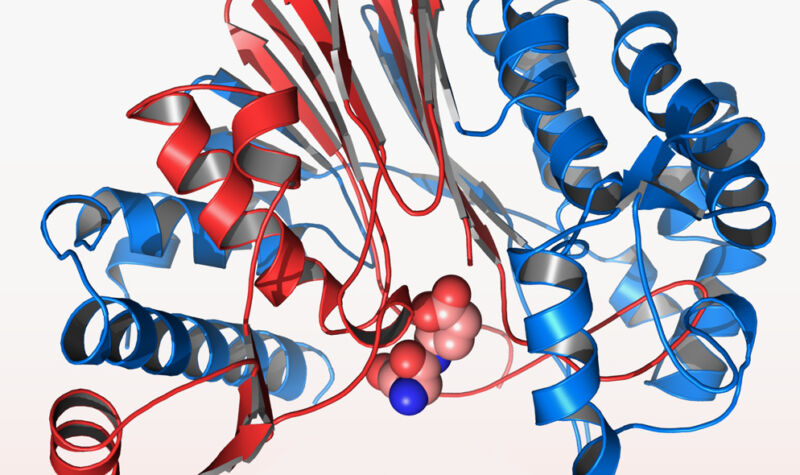DeepMind AI handles protein folding, which humbled previous software

Enlarge / Proteins rapidly form complicated structures which had proven difficult to predict. (credit: Argonne National Lab / Flickr)
Today, DeepMind announced that it has seemingly solved one of biology's outstanding problems: how the string of amino acids in a protein folds up into a three-dimensional shape that enables their complex functions. It's a computational challenge that has resisted the efforts of many very smart biologists for decades, despite the application of supercomputer-level hardware for these calculations. DeepMind instead trained its system using 128 specialized processors for a couple of weeks; it now returns potential structures within a couple of days.
The limitations of the system aren't yet clear-DeepMind says it's currently planning on a peer-reviewed paper and has only made a blog post and some press releases available. But the system clearly performs better than anything that's come before it, after having more than doubled the performance of the best system in just four years. Even if it's not useful in every circumstance, the advance likely means that the structure of many proteins can now be predicted from nothing more than the DNA sequence of the gene that encodes them, which would mark a major change for biology.
Between the foldsTo make proteins, our cells (and those of every other organism) chemically link amino acids to form a chain. This works because every amino acid shares a backbone that can be chemically connected to form a polymer. But each of the 20 amino acids used by life has a distinct set of atoms attached to that backbone. These can be charged or neutral, acidic or basic, etc., and these properties determine how each amino acid interacts with its neighbors and the environment.
Read 13 remaining paragraphs | Comments